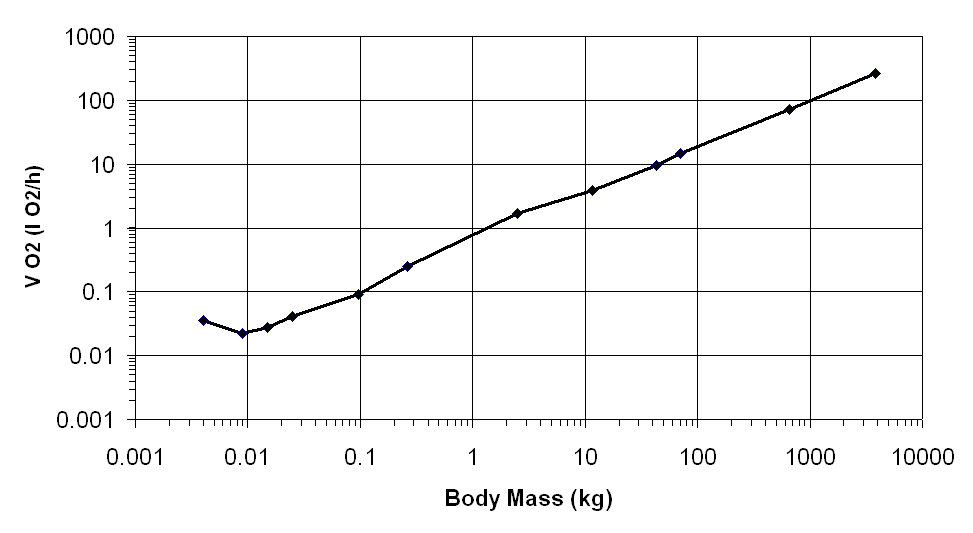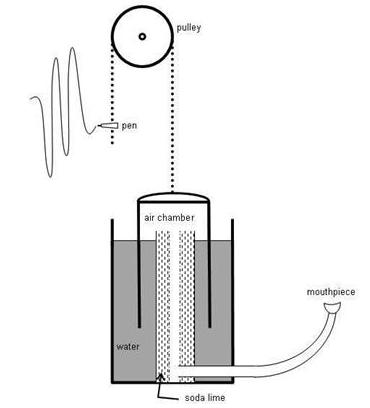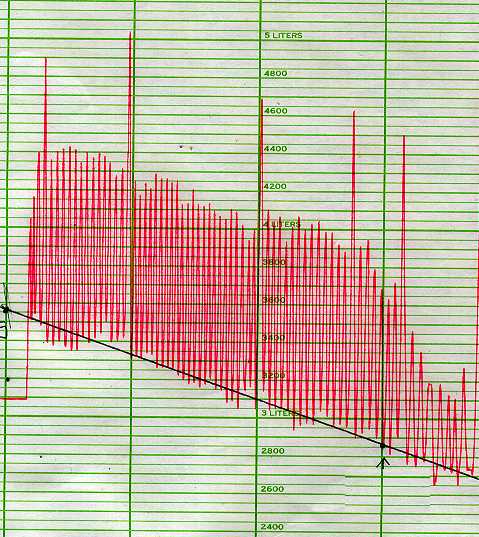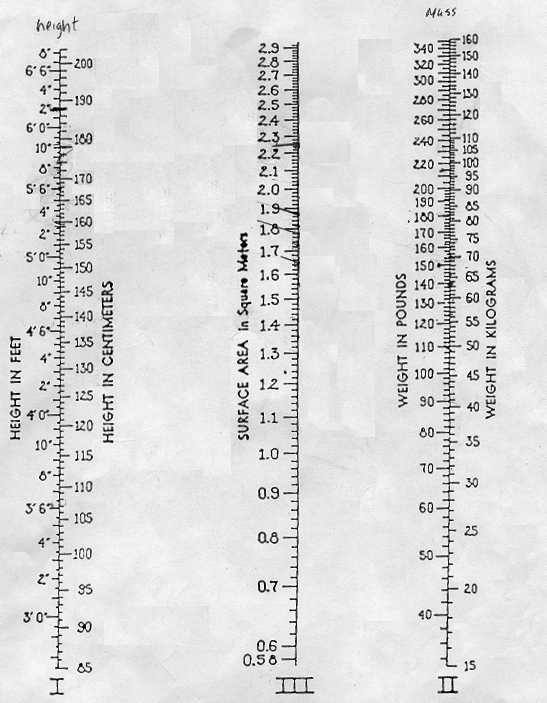Remember, there's a difference between oxygen consumption and metabolic rate. Mass-specific oxygen consumption is one index of metabolic rate (what is metabolic rate?). What are other indices of metabolic rate? Refer to the following figures in your text for pertinent results and the accompanying discussion for explanations: 5.8, 5.9 and 5.10.
Apparatus
Figure 1. The spirometre which can be used to measure CO2 evolution; the tracing on the right uses the modified protocol we used in lab starting in 2012; from that tracing, you should be able to measure Tidal Volume, Vital Capacity, Expiratory Reserve Volume, and Inspiratory Reserve Volume. The volume between the closest-spaced horizontal lines is 50 ml. Between the darkest horizontal lines is one litre. Stuck? See the digital tracings, below. What is the mathematical relationship between these four subdivisions of the lung?
Figure 6. The digital versions of spirometry. Note that the x- and y-axis
scales are different in the two images.


Blood-glucose data are available here:


Thanks to all who contributed their data!
|
St. Francis Xavier University
|
|







